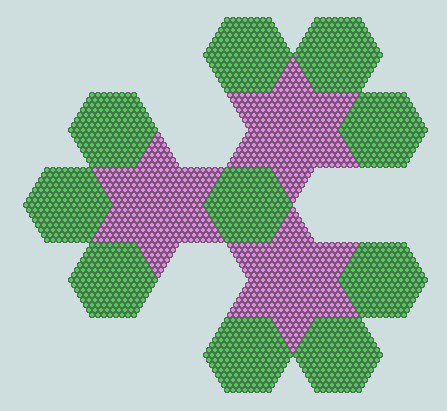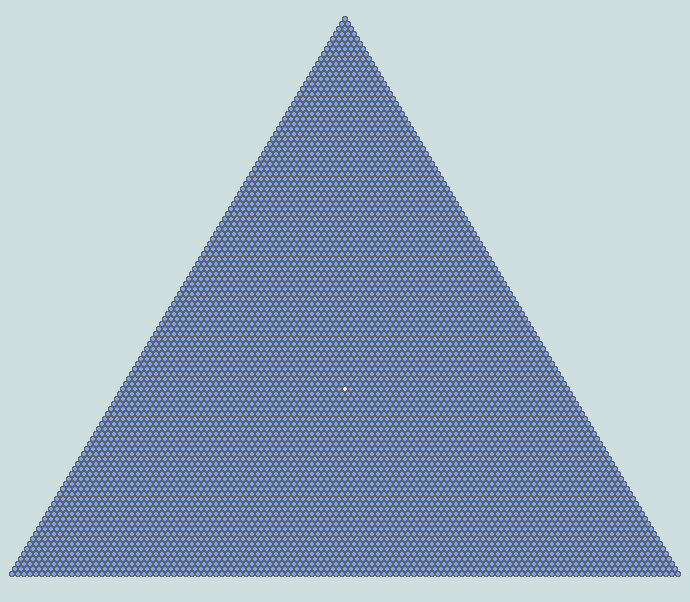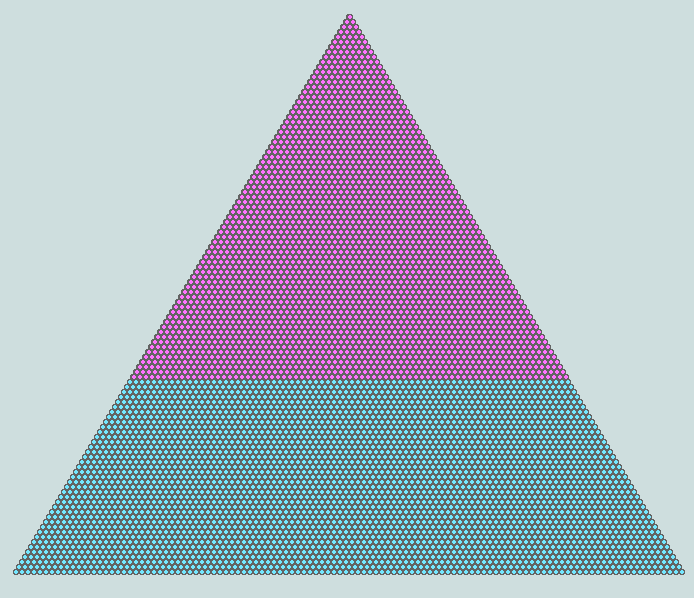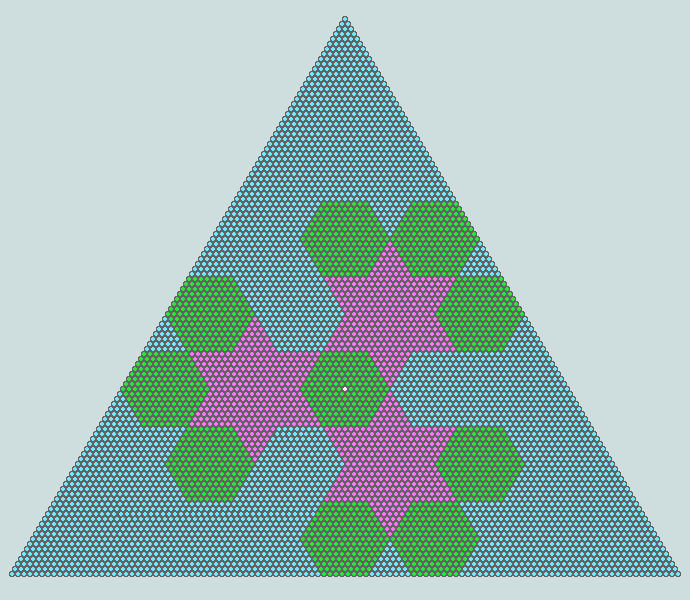
Matters Arising from the First Tessellated View of Genesis 1:1
[An explanation of the fair reading of Hebrew and Greek words as numbers is provided here].
Following these procedures, the 7 Hebrew words of Genesis 1:1 are represented by the set
{913,203,86,401,395,407,296}, and their sum, 2701 (= 37x73 = 73rd triangular number)
As has already been demonstrated the 10 hexagons (each of 169 units) representing the sum of the odd words of this verse tessellate with the 3 hexagrams (each of 337 units) arising from the sum of the evens. Here is the result:
Remarkably, this figure is also associated with a second verse which speaks of the Creation, viz John 1:1, whose 17 Greek words are represented by the number set
{55,719,58,70,373,31,70,373,58,450,420,134,31,284,58,70,373}, and their sum, 3627 (= 39x93).
While 3627 is not triangular, 3627 + 2701 is! Here is a representation of this sum, 6328, as 112th triangular number:

Interestingly, like 2701, this is a centred triangle - its centroid element represented in white - whose elemental triangle is 703 (the sum of words 6 and 7 of Genesis 1:1). [For an explanation of these features, proceed here]. The outline (or perimeter) of this figure is 333, or 9x37 - the difference between 2701 and 2368 (the Lord's number).
In the next diagram, John 1:1 appears in the role of a perfect trapezial plinth supporting the triangular representation of Genesis 1:1.

Now, returning to our earlier triangle representing the sum of these verses, we observe that the tessellated form of the Bible's first verse may be precisely fitted within this figure, thus:

Clearly, the sum of the blue areas represents John 1:1!. Observe that the centroid of the triangle coincides with the centroid of the Genesis 1:1 tessellation; this occupying the 38th position in the 38th row, as counted from the bottom up. The complete figure thereby reveals rotational (order 3) symmetry.
[As a footnote, we might recollect that these same verses are involved in the determination of good approximations for the universal constants 'pi' and 'e', respectively, from letter- and word- products. Details may be found here.]
Vernon Jenkins MSc
2007-02-16